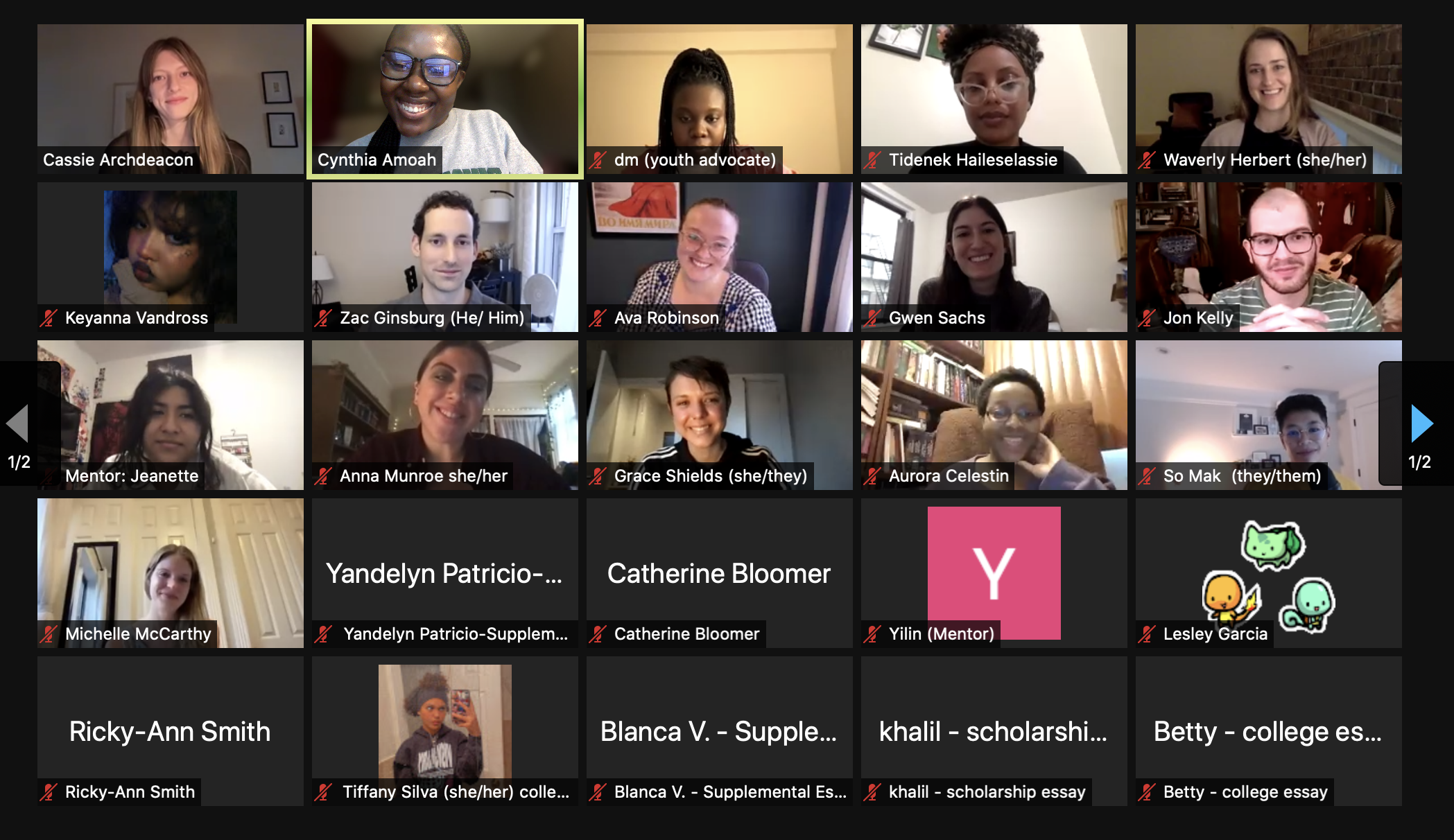
This fall, fellows from the WriteOn NYC program at the Schools of Public Engagement offered assistance to students in the Parsons Scholars program who were going through the college application process. The fellows—MFA Creative Writing students who have been trained to work with high school students—worked one-on-one with 24 Parsons Scholars seniors, helping them write their personal essays and artist statements and showing them how to share their personal narratives in a way others will find engaging.
The partnership between WriteOn NYC and Parsons Scholars turned out to be a natural fit, as the two programs share a mission of helping high school students from low-income backgrounds explore their creative talents and find connections between their interests and possible careers. The Parsons Scholars program, housed in the School of Design Strategies (SDS) at Parsons, enables New York City students from low-income backgrounds to explore art and design and its potential for aiding self-discovery, promoting social justice, and providing educational and career paths. WriteOn NYC fellows volunteer at middle schools and high schools in the city with the goal of making literature more accessible to students, both as readers and writers. These volunteer opportunities help the fellows prepare for careers in teaching and nonprofit work as they learn to develop and deliver culturally relevant and responsive reading and writing curricula for students.
“What’s exciting about how this partnership between WriteOn NYC and Parsons Scholars came together is that it encapsulates many of the ways in which The New School is great. The university has a wealth of knowledge, expertise, and programs,” says Matthew Villarreal, director of the Parsons Scholars program. “I was introduced to WriteOn NYC by SDS Dean Cynthia Lawson Jaramillo, who mentioned to me that there was this program doing something a bit similar to Parsons Scholars. I reached out to WriteOn Executive Director Helen Schulman and we started brainstorming ideas on how we could work together, since our programs have a similar mission and similar demographic that we serve.”
“We’re both in the business of trying to help young people realize their dreams and to help underserved kids the best we can,” says Schulman. “We wanted to find a way to join forces, so we reached out to current and past fellows and asked if they wanted to work with these students.”
In previous years, the Parsons Scholars program provided SAT support to students as they prepared to apply to colleges and universities. However, many colleges and universities have stopped requiring SAT scores, making the rest of the application, including the personal essay, even more important. “Since many schools are not requiring SAT scores, we were trying to figure out the best way to support our students in terms of college access and preparation. We figured that there might be other people who could help our students with essay preparation in a more intimate way instead of trying to provide writing lessons for a whole group. If we could make the groups as small as possible, ideally one-on-one, we could provide individualized reviews and support for our scholars. That’s where the real troubleshooting happens—in the details,” says Villarreal.
The opportunity to get individual instruction on creating an engaging personal narrative from someone who is excited and knowledgeable about writing has been an invaluable resource for the applicants. “Applying to college is stressful, and they don’t have private tutors or other professionals helping them. They’re not taking preparatory courses in this, so this is incredibly useful to them,” says Schulman. “We really needed people who can help these kids get into the schools they’re applying to, so we sent MFA students with very strong grammatical skills who are kind, smart, fun, and hardworking. We also always strive for diversity in our fellows. I read the correspondence between Matthew’s students and my students and it’s great. I’m not privy to the actual essays, but I see the back-and-forth as they work together and it is so lively, warm, and kind. My students, every interaction they have with these kids, they love it. It’s a great joint process.”
Villarreal and Schulman are planning to continue this partnership in the spring semester, when they will be working with high school juniors. Since these students will be at an earlier point in the application process, these sessions will be more lesson-driven, focusing on helping the students generate and flesh out ideas, brainstorm, and make writing more engaging. “I’m excited about where this collaboration can lead and how it can only be strengthened in the future. Art and design and writing and communication are the flip sides of the same coin, and they’re very important to braid together,” says Villarreal.
Schulman is excited about continuing with this program and is eager to find ways for similar programs across the university to collaborate. “Around the university, there are all these pockets of people doing entrepreneurial programs for high school students, but we’re not in communication with one another,” says Schulman. “If we work together, maybe we can get more university support and strengthen the programs and our outreach to this city that we love.”